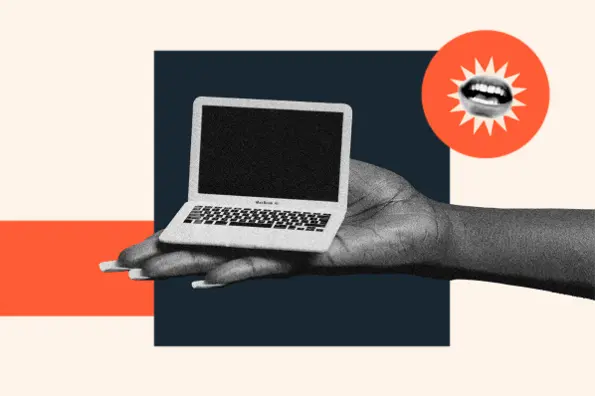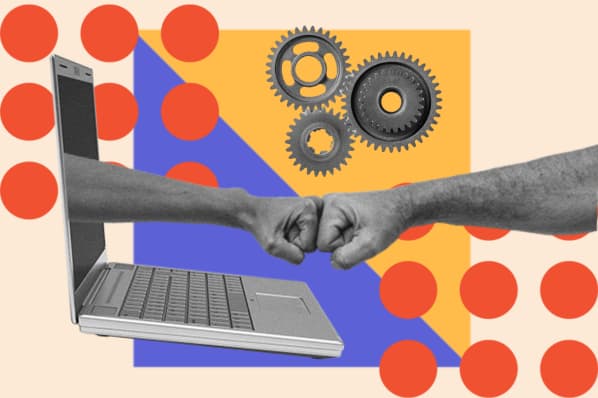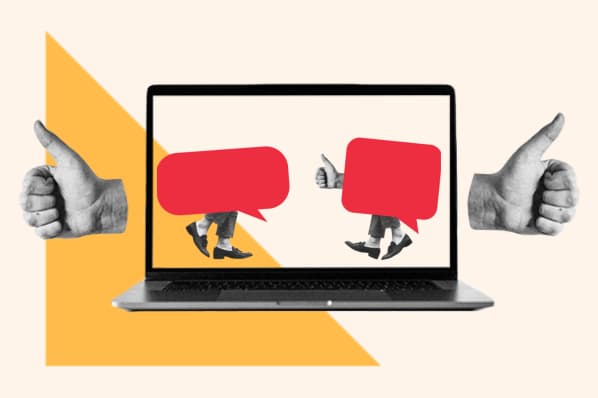In 2017, a study of London cabbies found that those who navigated by sight had a more active hippocampus than those who used digital assistance. They also found that using GPS actually “switches off” parts of the brain used for navigation.

(Note: The hippocampus is a part of the brain associated with learning and memory and not, in fact, a college for hippos.)
In 2020, a similar study found that habitual use of GPS led to a decline in spatial memory. Turns out that when you do what a device tells you, your brain doesn’t get the same stimulation as when you figure it out for yourself. And brains are like muscles; you either use ‘em or you lose ‘em.
Moms always said TV would rot our brains. Maybe they just had the wrong suspect?
So that’s what was on my mind when I saw an ad for a wearable AI device. If Apple Maps is turning off my brain, what happens when a bot is always with me, feeding me answers, directions, and reminders? Could an over-reliance on AI affect my brain, too?
To find out, I sat down with Dr. Tarek Aly, a practicing psychiatrist. Dr. Aly is also a research associate with Harvard Medical School’s Digital Wellness Lab, where his focus is on problematic interactive media use.
AI Whatables?
If you haven’t heard of wearable AI, you’re forgiven. Until recently, they’ve been the kind of niche tech you’d only hear about from that one friend who’s always got the newest iPhone and listens to music genres with names like “post-punk shoegaze.” (Hi, Frank!)
AI wearables are devices that give you access to artificial intelligence without having to fumble with your smartphone. As the name suggests, they’re meant to be worn on the body.
They might take the shape of your glasses, watch, necklace, or even a small unassuming pin. For as new as they are, they cover a fairly wide range of uses and abilities. Here are a few examples to show you what I mean:
Humane’s AI Pin
This month, tech company Humane launched the “Ai Pin,” as a screenless, standalone device that gives you access to an AI assistant. Imagine Siri without a smartphone – for $699.
During a recent TED Talk, Humane’s founder, Imran Chaudhri, used the Pin to give shopping recommendations, translate his presentation into French, and project a display onto his hand using a laser.
As someone with a love/hate relationship with my phone, I was ready and willing to hate the Pin, too. But I can’t.
I’ve wanted one of these since I first saw Captain Picard talk to a computer through his badge.
Ray-Ban’s Meta Smart Glasses
Yes, that Meta. Zuckerberg recently teamed up with sunglasses giant Ray-Ban to take another swing at smart glasses.
The glasses look almost like your classic Wayfarers but come packed with an array of microphones, cameras, and speakers.
Simply by saying, “Hey, Meta!” you can access Bing, WhatsApp, and Instagram. They also connect to your phone, so you can use voice commands to play music or take pictures and video.
The Rewind Pendant
The Pendant is a small necklace with a microphone and access to the Rewind AI. Basically, it records everything around you and analyzes it.
You can use it to transcribe meetings, make to-do lists, and get data insights about your conversations.
I can feel you cringing, but Rewind promises they’re working on ways to prevent people from being recorded without consent.
Now that you see the range of things that AI wearables can do for (and to) us, you’ll understand concerns about over-reliance.
What AI Wearables May Do to Our Brains
Like a good psychiatrist, the first thing Dr. Aly did was to reframe my way of thinking about it.
“The exposure of information isn’t inherently a bad or a good thing, but there’s pros and cons. What do we get, what do we lose?”
So, could a change in our brains be one of the things that we get or lose?
“There’s no doubt it will,” says Aly. “In order to actually train your brain, you have to push against adversity.”
“When you go to the gym, and you start working out, I don’t want you to just lift a bar that’s really easy for you two times and say, ‘Alright, I’m good. I did my workout for the day. I’m going to be shredded.’”
In other words, relying on AI to constantly handle our mental workload could be depriving our brains of the stimulation they need.
What do we lose?
I asked Dr. Aly if he himself had any concerns about these devices.
“When it comes to wearables and AI, I get nervous that if our brain is getting diverted in different directions that we’re going to miss out on a lot of that meta-communication,” he said. “That it’s going to turn into a lot of people who are struggling to make eye contact. Which we’re already shifting a lot more towards because we spend so much time on our phones and our devices as it is.”
(Meta-communication refers to the indirect ways that we communicate. Things like tone, facial expressions, and body language.)
Still, he’s quick to steer the topic back to the idea of pros and cons. To illustrate his point, he compares my worries to those of parents who worried that COVID masks would block facial cues and impact children’s social skills.
“Obviously, that’s a concern of mine. I have a seven-year-old, and I think about that. But I also think about the other stuff, too,” Aly says in a comforting tone.
“If you’re wearing a mask, then that means you’re going to be hyper-focused on the things you can see. You’re going to start to pick up meta-communication in someone’s eyes. Could you see if someone was smiling if you couldn’t see the bottom half of their face? Most people can. They can see the curvature of their eyes. We’re picking up on meta-communication that we didn’t have before.”
But what about anxiety over being recorded by unseen cameras or microphones?
“The increasing use of technology is giving a lot of people who are naturally concerned and fearful of these things an outlet for paranoia. Whereas, if you were nervous about cellphones listening in on your conversations before, if somebody was on their phone, you just avoid them. And now [if] everybody has a wearable AI chip, it’s harder to escape that.”
This is especially true when glasses, watches, and necklaces could be listening, too.
“And their fears are relatively rational,” he admits. “But now, you’re expecting those people to be more understanding of somebody walking around looking like Cyclops from the X-Men, and they’re ordering their coffee while doing their Amazon shopping, and also watching season 7 of the Golden Girls.”
Dr. Aly predicts this will be really overwhelming for some.
What do we gain?
“There’s always a pro and a con, and I think that’s what happens with the integration of these new technologies, too. There’s going to be a trade-off.”
To explain what he means, Dr. Aly brings up the cab driver study.
“There were studies that showed frontal lobe changes in taxi drivers in London that used GPS versus the ones who don’t. However, the benefit could be being able to be a lot more productive and a lot more efficient.”
The drivers may lose some ability to navigate on their own, but with the GPS, they’re able to do their jobs much more quickly. And which of those things is more important to their everyday lives?
Dr. Aly points out that these kinds of trade-offs are nothing new. And they’re often beneficial.
“The vast majority of us may be able to [use] a computer, but most of us don’t know how to build one. The innovation comes on those steps like a pyramid. So is there a benefit to learning the basics? Absolutely. But then again, [by avoiding AI] we may be limiting our potential with how far these tools can push us.”
Pros and Cons
“I’m not someone who shies away from technology because it’s like fighting the river. It’s going to happen,” Aly says.
AI is here. It’s in our workplaces, schools, and entertainment. Dr. Aly likens it to the explosion of the internet.
“The internet generation was really the first generation for humanity to be raised with basically the access to any education at their fingertips. Education, for hundreds of years, was reserved for privileged people."
"Now, most people have a cell phone . . . [and] internet access," Aly continues. "To be able to make an assessment of what that does to a brain, it’s hard to interpret that."
He adds that even without the variable of AI, exposure to so much information can be overwhelming, and potentially damaging. AI just makes things more complicated.
“If you add in wearables or predictive commercialization, we have no idea the variable that puts on the already staggering amount of information that is available to the developing brain.”
He then drops the moral of the story:
“We just have to make sure that what we gain is worth what we’re losing.”
Editor’s note: Dr. Aly’s comments reflect his own opinions and not those of Harvard Medical School.




![Real or AI-Generated? You Guess [Quiz]](https://www.hubspot.com/hubfs/real%20or%20ai.png)

![AI Predictions that Could Impact Marketers in 2025 [Trending Data & Expert Insights]](https://www.hubspot.com/hubfs/AI%20predictions.png)




